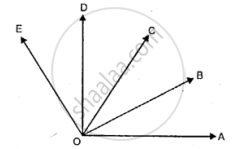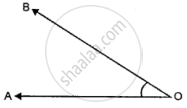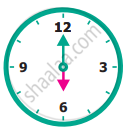Topics
Number System
Number System(Consolidating the Sense of Numberness)
- Concept for Number System(Consolidating the Sense of Numberness)
- Consolidating the Sense of Numberness up to 5 Digits, Size, Estimation of Numbers, Identifying Smaller, Larger, Etc.
Sets
- Concept of Sets
- Representation of Sets
- Types of Sets: Finite/Infinite and Empty
- Cardinality of a Set
Estimation
- Concept of Estimation
- Estimation of Outcome of Number Operations
Numbers in India and International System (With Comparison)
- Numbers in Indian and Comparison
- Numbers in International Systems and Comparison
Place Value
Natural Numbers and Whole Numbers (Including Patterns)
Negative Numbers and Integers
- Negative and Positive Numbers
- Need for Negative Numbers
- Connection of Negative Numbers in Daily Life
- Representation of Negative Numbers on Number Line
- Ordering of Negative Numbers, Integers.
- Representation of Integers on the Number Line
- Operation of Addition and Subtraction of Integers
- Addition of Integers
- Comparison of Integers
- Concept for Ordering of Integers
Number Line
- Operation of Whole Numbers on Number Line
- Seeing Patterns for Operations on Numbers.
- Identifying And Formulating Rules for Operations on Numbers.
HCF and LCM
- Concept for HCF and LCM
- Prime Factorization for HCF and LCM
- Division Method for HCF and LCM
- Property HCF x LCM = Product of Two Numbers
Playing with Numbers
- Arranging the Objects in Rows and Columns
- Simplification of Expression by Using Brackets
- Factors and Multiples
- Concept of Even and Odd Number
- Concept for Co-prime Numbers, Prime Factorisation
Ratio and Proportion
Ratio
- Concept of Ratio
- Difference Between Fraction and Ratio.
Proportion (Including Word Problems)
- Proportion as Equality of Two Ratios
- Concept of Ratio
- Concept of Proportion
Unitary Method
- Concept for Unitary Method (With Only Direct Variation Implied)
Fractions
- Concept of Fractions
- Concept of Fraction as a Part of Whole
- Representation of Fractions (Pictorially and on Number Line).
- Concept for Fraction as a Division.
- Concept of Proper Fractions
- Concept of Equivalent Fractions
- Concept of Fractions
- Operations on Fractions (Avoid Large and Complicated Unnecessary Tasks). (Moving Towards Abstraction in Fractions).
Decimal Fractions
- The Decimal Number System
- Concept of Place Value
- Concept for Inter Conversion of Fractions
- Word Problems Involving Addition and Subtraction of Decimals (Two Operations Together on Money, Mass, Length and Temperature).
Percent (Percentage)
- Basic Concept of Percentage
- Idea of Percent as Fraction with 100 as Denominator
Idea of Speed, Distance and Time
- Relation Between Speed, Time and Distance
- Idea of Speed and Simple Daily Life Problems Related to Speed, Time and Distance
Algebra
Fundamental Concepts
- Fundamental Concepts for Algebra
- Introduction to Constants, Variable and Unknown Through Patterns
- Concept for Appropriate Word Problems and Generalisations
Fundamental Operations (Related to Algebraic Expressions)
- Operation on Algebraic Expression
- Algebra Terminology - Literal Numbers, Terms, Expressions, Factor, Coefficient, Polynomials, Degree, like and Unlike Terms
- Concept for Unknowns Through Examples with Simple Contexts (Single Operations)
Substitution (Including Use of Brackets as Grouping Symbols)
- Concept of Substitution
Framing Algebraic Expressions (Including Evaluation)
Simple (Linear) Equations (Including Word Problems)
- Concept of Simple (Linear) Equations (Including Word Problems)
- Linear Equation in One Variable
Geometry
Fundamental Concepts
- Introduction to Basic Concepts in Geometry
- Concept for Basic Geometrical Ideas (2 -d)
- Concept for Linkage with and Reflection in Everyday Experiences.
- Concept of Line
- Concept for Open and Closed Figures.
- Concept for Interior and Exterior of Closed Figures.
- Curvilinear and Linear Boundaries
- Concept of Angle
Angles (With Their Types)
- Types of Angles
- Measure of Angles
- Introduction to Lines and Angles
Properties of Angles and Lines (Including Parallel Lines)
- Concept of Angle
- Measure of Line Segment
- Pair of Lines – Intersecting and Perpendicular Lines, Parallel Lines
Triangles (Including Types, Properties and Constructions)
- Concept of Triangles
- Classification of Triangles (On the Basis of Sides, and of Angles)
Quadrilateral
- Concept of Quadrilaterals
- Interior and Exterior of a Quadrilateral.
- Concept of Quadrilaterals
Polygons
- Concept of Polygons
- Simple Polygons (Upto Octagons Regulars as Well as Non-regular).
- Sum of Angles of a Polynomial
- Sum of Exterior Angles of a Polynomial
- Regular Polynomial
The Circle
Revision Exercise Symmetry (Including Constructions on Symmetry)
- Concept of Revision Exercise Symmetry (Including Constructions on Symmetry)
- Concept of Reflection Symmetry
- Concept of Observation and Identification of 2-d Symmetrical Objects for Reflection Symmetry.
- Operation of Reflection (Taking Mirror Images) of Simple 2-d Objects
- Recognising Reflection Symmetry (Identifying Axes).
Recognition of Solids
- Concept of Recognition of Solids
- Identification of 3-d Shapes: Cubes, Cuboids, Cylinder, Sphere, Cone, Prism (Triangular and Square), Pyramid (Triangular and Square)
- Identification and Locating in the Surroundings.
- Faces, Edges and Vertices
- Nets for Building 3-d Shapes
- Faces, Edges and Vertices
Mensuration
Perimeter and Area of Plane Figures
- Concept of Perimeter
- Shapes of Different Kinds with the Same Perimeter.
- Concept of Area
- Conversion of Units (Mass, Time, Money, and Capacity) from to Smaller to Larger and Vice-versa
- Counter Examples to Different Misconcepts Related to Perimeter and Area.
- Perimeter of a Rectangle
- Deducing the Formula of the Perimeter for a Rectangle and Then a Square Through Pattern and Generalisation.
Data Handling
Data Handling (Including Pictograph and Bar Graph)
- Collection of Data to Examine a Hypothesis
- Collecting Data
- Concept of Pictograph
- Organisation of Data
Mean and Median
Types of Angles:
| Angle Type | Angle Range | Description | Illustration |
| Acute Angle | 0° < θ < 90° | An angle that is less than 90°. |  |
| Right Angle | θ=90∘ | An angle exactly equal to 90°. |  |
| Obtuse Angle | 90° < θ < 180° | An angle greater than 90° but less than 180°. |  |
| Straight Angle | θ=180° | An angle exactly equal to 180°,forming a straight line. |  |
| Reflex Angle | 180° < θ < 360° | An angle greater than 180° but less than 360°. |  |
| Zero Angle | 0° ≤ θ ≤ 0° | An angle with a measure of 0 degrees |  |
If you would like to contribute notes or other learning material, please submit them using the button below.
Shaalaa.com | Right Angle, Straight Angle, Complete Angle & Reflex Angle Part - 1
to track your progress
Series: Types of Angles- Acute, Obtuse, Right, Straight, Reflex, Complete and Zero Angle
0%
Right Angle, Straight Angle, Complete Angle & Reflex Angle Part - 1
00:16:11 undefined
00:16:11 undefined
Right Angle, Straight Angle, Complete Angle & Reflex Angle Part-2
00:07:33 undefined
00:07:33 undefined
Relation Between Right Angle, Straight Angle & Complete Angle
00:07:46 undefined
00:07:46 undefined
The Measure Of Right Angle, Straight Angle & Complete Angle
00:06:21 undefined
00:06:21 undefined
Some Important Points Related To Right Angle
00:14:40 undefined
00:14:40 undefined
How To Classify Whether An Angle Is Right,Acute,Obtuse,Straight Or Reflex? Part-1
00:10:52 undefined
00:10:52 undefined
How To Classify Whether An Angle Is Right, Acute, Obtuse, Straight Or Reflex? Part-2
00:12:02 undefined
00:12:02 undefined







